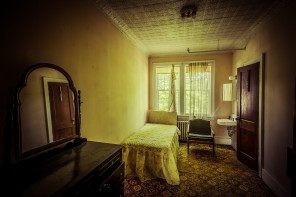I am a Native American woman, a member of the Diné (Navajo) nation. I am also a surgeon, and part of my approach to my clinical practice is based on my cultural and spiritual background. Soon after I finished my surgical training, in the early ’90s, I returned home to work in a small hospital on the border of the Navajo reservation. As I cared for native people, I began to notice all the ways that our current medical system was not a good fit them; this led me to develop a ‘blended’ approach, one that respected the values and beliefs of the people I cared for. It was a response that came naturally, and at first I didn’t fully appreciate the radical shift that it represented, or that a different way of practicing medicine and surgery was something that many people—even those who were not native—would also appreciate. In my column for Religion Dispatches I’ll share this approach, and how I implement it.
In The Scalpel and the Silver Bear (Bantam, 1999), I wrote of my journey as a healer. I spent time studying the ceremonies of my tribe, and learned even more from the teachings of a Blessing Way chanter, Thomas Hatathlii. My understanding of Diné healing deepened and it further transformed my practice. Following the work of Peter Gold, an anthropologist who has done a comparative analysis of Diné and Tibetan Buddhist culture, I began to study Buddhism, and over time, adopted many Buddhist practices. Diné and Buddhist philosophies, including mindfulness, are intertwined in my spiritual life, and both are part of my clinical practice.
By this time, you’re probably wondering: What exactly does she mean? Is she doing ceremonies during surgery? Or is she using traditional medicines? No. It takes many, many years to be trained to perform ceremonies, or to use traditional medications. But there are many philosophies, and practices illuminated by the ceremonies, that inform the way I think about, and practice surgery.
For example, central to Navajo healing philosophies is the concept of hozho, a way of living that encompasses concepts of beauty, harmony, truth, balance, and peace. We believe we are deeply connected to all elements of our world—we are not separate from that which is around us. It has been described as: “to be at one with… the world around you in such a way that the notes of your life complement and resonate with the symphony of life all around you. You neither pitch above nor below the thrumming chords of the Universe, but yet at the same time your melody stands on its own merits and is heard with utter clarity—pure in tone and pitch and strength, singular yet subsumed in the whole.”
Navajo ceremonies aim to restore this state of being, and hozho is, primarily, a very special state of mind. We believe that hozho also has everything to do with healing.
Surgery is primarily focused on the problems within patient’s bodies that require surgical attention. I am always mindful of this focus, but I am also attentive to the minds of patients before they have surgery. I believe that if patients are in the right state of mind, their operations will be smoother, and their healing will be faster. (This view is now supported by the research on the effects of stress on a patient’s physiology.) With this view in mind, I try to bring patients to a state of calm and trust before surgery. The patient-physician relationship is, of course, central to the development of trust. It is a time when patients have voluntarily given control over their bodies to others, and this can be frightening. The experiences the patient has at the time of surgery are also important, and I try to make sure that our surgical environment, to the extent possible, is a positive experience. A great deal depends on the way a patient is treated by those who care for her; the state of mind of those who provide care is therefore very important. Mindfulness can be very effective in this environment, as a ‘mind state’ that represents a high level of awareness and attention. These are just a few examples of the way Navajo and Buddhist philosophies can enhance the practice of surgery.
I have only touched briefly on one aspect of Navajo ceremonies, and how they relate to medicine and surgery, but these concepts will be further developed in future columns. Surgery is based in science, and ‘secular,’ while these philosophies have a spiritual basis. This hybrid of the two seemingly contradictory approaches will not appeal to everyone, and I don’t expect it to; neither do I aim to transform the entire field of surgery. But I do wish to provide a different vision for how surgery can be practiced, and I have learned that many patients welcome such an approach.
One last thought—the Navajo culture is a matriarchal society, so if you hear the values of women in these discussions it is not your imagination!



